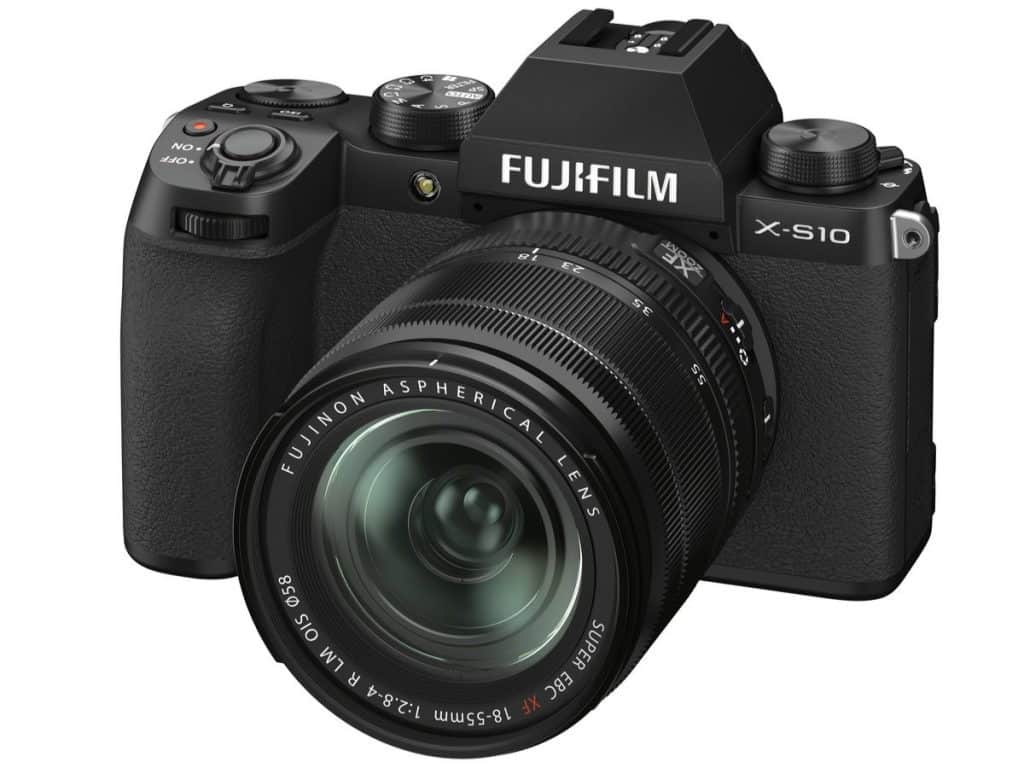Table of Contents
amazon Fujifilm X-S10 reviews
A certain X-Txx was expected to be the next Fujifilm camera after the X-T4, but Fujifilm finally opted for another camera line with the X-S10. It has no updates compared to the X-S1; rather, the cool combo of X-T30 and X-H1 series made for one of the most powerful cameras at an affordable price.
Sensors, performance
Fujifilm X-S10 borrows the same 26MP X-Trans sensor used in every other most powerful Fujifilm camera today, with swift noise reduction and data readout performance for autofocus and video. Extremely superior to the X-T30 in most respects, it can be equaled by areas of performance.
The video functionality is also rather tremendous: 4K/30p, 8-bit. If you use an external HDMI recorder, 10-bit 4:2:2 recording can be done, and thanks to a newly incorporated cooling system, the X-S10 can now shoot uninterrupted for up to 30 minutes, compared to the X-T30’s 10-minute restriction.
Shooting continuously with the machine is quite fine, 8fps for a mechanical shutter laying down to 20fps with an electronic shutter, and up to 30fps crop by 1.25x.
Grip
The grip of the machine is also very good, rather extraordinarily good, inspired by the Fujifilm X-H1 series, a protruding grip allowing an easy grip and control with different lenses, including heavy ones.
As seen above, it worked beautifully with the XF 16-55mm F2.8 mounted on the Fujifilm X-S10; I don’t think the body is small enough to stay out of the way; with the nice grip, controlling heavy lenses is a breeze on the X-S10.
New anti-vibration system
The Fujifilm X-S10 exhibits a new anti-vibration system small enough to fit into a very tiny body, which, in fact, maintains the same physical dimensions as the Fujifilm X-T30.
As for lenses with stabilization, it achieves stabilization in 6 stops, whereas it is 5-5.5 stops with stabilization-less lenses. The two auxiliary systems were said by Fujifilm to be 30% more compact than that of the Fujifilm X-T4, requiring a complete redesign in the process.
Control wheel and interface
Things will be rather different from every Fujifilm line with the X-S10 in the case that you have used. Gone are the familiar speed, ISO, and EV wheels. In their stead, you will have a PASM mode dial and two custom dials on either side; this seems to say Fujifilm is aiming at a new group of users with the X-S10, who do not swap information very much. Quite unlike another entry-level machine of the company, the X-T200.
This one has a tweaked Auto Mode, which can adjust autofocus to a limited degree but still chooses color simulation depending on the conditions automatically. The camera has a built-in small flash and an ISO button, while the Q button has been pushed up to the top edge of the camera body.
The seller will then have a button that can customize the function (Drive setting) in the upper left corner, another button just to the right of the EVF, the usual function buttons Playback, Display / Back, and Menu / OK, AEL, AF-ON with a joystick. The buttons on X-S10 are similar to those on the X-T30, but the difference is that they are raised much higher.
The rear screen of the machine is a touch screen, which can be rotated and flipped like that of X-T4, quite appropriate for video-recording users. The EVF found in the machine measures a resolution of 2.36 million. It is not so much to be compared with the X-T3 or X-T4 but still has good contrast enough to using.
Connection ports
The connection port of this X-S10 machine is quite enough; it is placed on the side of the machine. These are the places where the device has a 3.5mm mic port, USB-C port, and HDMI port. The device’s USB-C port can transfer data, charge an inbuilt battery, or attach accessories to convert to audio. However, the compact design will be a bit tangled if the screen is turned upside down.
Memory card and battery
This is the battery used by the Fujifilm X-S10, which is none other than the basic NP-W126S batteries that can be found in abundance in most of its other cameras, leaving out the new NP-W235 batteries just like what’s found in the X-T4 model. The announcement claims up to 325 photos can be shot with an LCD-screen use, about the same as what it has experienced during the X-T3, where one battery may not suffice. It would be advisable to prepare one or two more batteries for use when taking such photos.
The memory card slot is also the trade-off point, and most people hesitate in Fujifilm X-S10 when it is still placed with the battery slot and only supporting the UHS-I card standard.
Conclusion
The current overall review Fujifilm X-S10, according to me, is a real machine that gives a very good performance for the price for you to choose today. In actual usability, the X-S10 has a good quality finish, a solid grip, along buttons to operate but is a bit different from other high-end Fujifilm users; it is very good and easy for a new user to get used to it.
where can you get a Fujifilm X-S10 online
Fujifilm X-S10 Mirrorless Camera Body- Black, X-S10 Body- Black: Buy it now
Fujifilm X-S10 Mirrorless Digital Camera, Black (Body Only) – Starter Bundle with 64GB SD Memory Card, Shoulder Bag, Octopus Tripod, Cleaning Kit: Buy it now
Fujifilm X-S10 Mirrorless Camera, Black – Bundle with Free Accessories & PC Software Suite: Buy it now

